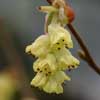|
|
CORYLOPSIS This genus is often considered to be acid loving and indeed will thrive on acid soils. However, with the possible exception of C. pauciflora, they will survive almost indefinitely on even shallow chalk soils. As with so many plants, it is not the pH of the soil that is important, so much as the structure - it is much more important that it is not too heavy and drains well enough in winter whilst holding moisture adequately in summer. Racemes of attractive
yellow flowers hang from bare branches in early spring and I never fail to
be pleasantly surprised by their lovely perfume too. |
|
|
|
|
CORYLOPSIS
glabrescens var. gotoana 'Chollipo' |
|
|
|
|
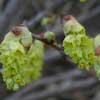 |
CORYLOPSIS
glabrescens var. gotoana |
|
|
|
|
CORYLOPSIS glabrescens
'Lemon Drop' |
|
|
|
|
|
CORYLOPSIS
glandulifera |
|
|
|
|
| CORYLOPSIS pauciflora The smallest growing of the genus (to 2m) with small leaves which are bronzy when young. Large primrose yellow flowers held singly, often just before the other species. It is also sweetly scented. A truly beautiful plant but it prefers good well drained soil and a sheltered site. See it in the Quarry Garden and Woodland Walk. |
|
|
|
|
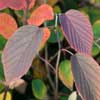 |
CORYLOPSIS
sinensis 'Spring Purple' |
|
|
|
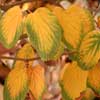 |
CORYLOPSIS spicata
'Red Eye' This species is robust in constitution, though usually remaining smaller in size. It has distinctively rounded, almost heart shaped leaves. The racemes of yellow flowers are equally memorable with prominent red stamens. Good autumn colour. |
|
|
|
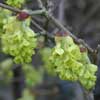 |
CORYLOPSIS veitchiana This well-behaved species seems to be particularly tolerant of heavier soil. It develops an upright habit, with long leaves which are often purplish when young. Large racemes of primrose-yellow flowers are sweetly scented. See it in the Quarry Garden and Woodland Walk. |
|
|
|
| CUNNINGHAMIA
lanceolata 'Glauca' This small genus of Chinese conifer most closely resembles the infamous monkey puzzle tree (and in more recent times, the Wollemii pine). It may be necessary to stake the young tree initially until it develops its own dominant leader. It will then grow in layers to create a much more dramatic and architectural shape than many conifers. However, it will get pretty big given enough years. This particular selection is totally hardy despite its almost tropical appearance, and has the most wonderful glaucous leaves, the bloom making the tree appear a breathtaking pale blue. Thanks to Keith Wiley for introducing me to this one and generously giving me a few cuttings to get me started. |
|
|
|
|
| CYCLAMEN
graecum I adore Cyclamen in all their forms and this species is particularly special. It emerges and flowers in the autumn, and is distinguished by some of the most handsomely marked leaves in the genus. It is perfect enjoyed in a cold greenhouse where it can be appreciated on the grimmest of days, but it can also be grown outside in much of this country, tucked under an evergreen or under an overhanging roof where it will get a little weather protection. It does not like to bake dry in summer. It develops something of a permanent tap root, and the key to success is to maintain deep moisture for this permanent root, whilst the corm itself is able to dry off during its summer dormancy. |
|
